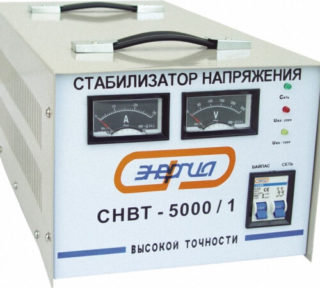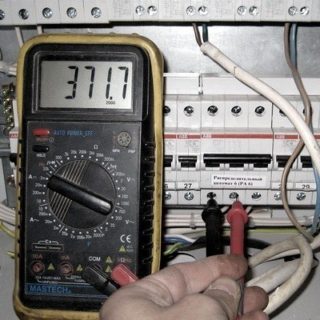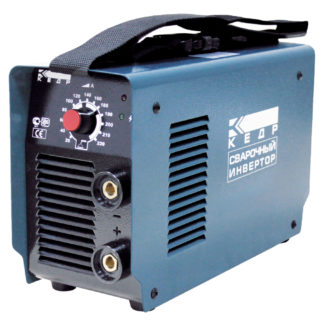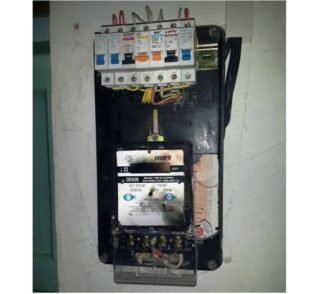During the operation of 380 Volt power networks, violations are possible that significantly affect the quality of the electricity supplied to the consumer. One of these deviations is the phase imbalance, which manifests itself in their uneven distribution over the loads connected to the line. The result of this effect is a significant reduction in the power of equipment included in the industrial three-phase network (transformers or motors, in particular). At home, it is fraught with damage to household appliances connected to one of the phases of the electric network of a country house. This is because the voltage in it becomes very underestimated, or vice versa - exceeds the permissible norm. A number of organizational and technical measures have been developed to prevent the negative effects of different voltages in the phases of 380 Volts.
Permissible skew rates
To limit the permissible voltage deviations due to phase imbalance, standards have been developed that regulate their values for industrial power networks. If these standards are exceeded, there is a real danger of failure of the power equipment connected to this line. Their exact values are given in the relevant GOSTs and other documents that determine the operation of electrical equipment (in the PUE, for example).
In accordance with the standards, fixed ratios are established between the ratings of voltages and currents in the least and most loaded sections of the lines. For power distribution boards, it should not exceed 30%, and for inputs to private houses (ASUs) - 15%. According to current GOSTs, the permissible phase imbalance on individual lines with reverse currents cannot be more than 2 percent, and on the neutral core of the transformer - 4 percent.
Reasons for phase imbalance in a three-phase network
There are several reasons for the appearance of phase imbalance in three-phase networks, the main of which are considered to be:
- Uneven distribution of existing capacities over the loads connected to each of the phase lines.
- "Zero break", most often manifested in the burning of neutral.
- Other malfunctions in the station equipment or in local consumers connected to it.
In the first case, the power consumed by the linear load increases sharply (or decreases), which leads to a corresponding change in the current flowing in this branch.
In the absence of phase imbalance, equal in magnitude current components flow along each of the lines included in the "star" scheme. Their resulting in neutral due to the vector addition of three separate components should theoretically be equal to zero. With an increase in consumption along one of the lines, the current components through it increase, as a result of which the neutral wire does not fulfill its function and violates the uniform distribution of phase potentials.
In the event of a neutral break (zero burning), a skew occurs due to the fact that the function of the neutral wire is automatically transferred to one of the phase conductors; in this case, the voltage on all others is shifted upward. Violations in the operation of station equipment also lead to uneven distribution along phase lines, but already on the side of the transformer “star”, and not the object connected to it (a country house, in particular).
Violation of symmetry in high voltage networks
In high voltage networks, the appearance of unwanted asymmetry is associated with the presence of powerful single-phase loads or three-phase consumers with unequal phase distribution. The sources of bias in industrial networks of 0.38-10 kV are various types of melting electric furnaces (ore-thermal, induction and similar heating plants). The list of equipment creating asymmetry should include inverter welding machines, characterized by high consumption currents and capable of violating the uniform distribution of loads.
Traction substations of railway transport are powerful sources of dangerous asymmetry, since modern electric locomotives are single-phase consumers of electric energy. Their power reaches several hundred kilowatts, which only increases the likelihood of disturbances in the distribution of loads.
You can verify their presence with the help of special current-measuring clamps, through which it is possible to check the circuits that work with overload. If current values are found in one of the phases that appreciably exceed the permissible values, one can safely say that there is a dangerous skew.
Negative effect of voltage and current distortion
The appearance of phase asymmetry must be promptly responded for the following reasons:
- In this case, the real threat of damage to devices connected to this network or a deterioration in their performance.
- This leads to disruptions in the operation of electric power sources (substation transformers, in particular).
- Another consequence of the abnormal phase distribution is a reduction in the life of the plant equipment.
For the average consumer, the effects of asymmetry translate into increased costs for electricity, repairs to household appliances, and the potential for injury. If the skew in the line is caused by the destruction of the neutral wire, the conditions for protection against electric shock noticeably worsen. The bus of the grounding device (charger) mounted on a transformer substation breaks; in the absence of a local circuit, the user remains completely defenseless.
When asymmetries appear in industrial networks, energy consumption also increases, and the line equipment included in them experiences severe overloads. At distribution substations, oil consumption in transformers increases sharply, and control and distribution equipment can fail. All these threats ultimately lead to additional material costs associated with the need to repair or replace burnt equipment
In order to prevent such situations, it will be necessary to think in advance of effective measures that contribute to their prevention. If it is not possible to avoid phase imbalance, you will have to use all possible ways to eliminate it.
Protection methods

To ensure the symmetrical operation of power networks and normalize the voltage value in each of the single-phase lines, special corrective devices are used. This function is most often performed by classical voltage stabilizers. However, these devices are not able to completely eliminate the asymmetry in the supply circuits, since their purpose is to stabilize only one phase. For this reason, it is not possible to protect the entire three-phase network with such devices, as well as to eliminate the consequences of skewing.
It is possible that the stabilizers themselves become the cause of the uneven distribution of electricity over the phases.
The following organizational and technical methods are used to protect three-phase circuits from phase asymmetry:
- high-quality study of the energy supply project, taking into account the uneven load;
- the use of special devices with which it is possible to automatically align them (the so-called balancing transformers);
- adjustment of existing energy consumption schemes (if mistakes were made earlier).
Significant help in protecting against asymmetry is provided by special blocking equipment (phase and voltage monitoring relays, for example), which disconnects the line when violations are detected.
Only timely measures taken will eliminate phase imbalance in the network and eliminate the negative consequences of this phenomenon: protect equipment and household appliances from breakdowns.






